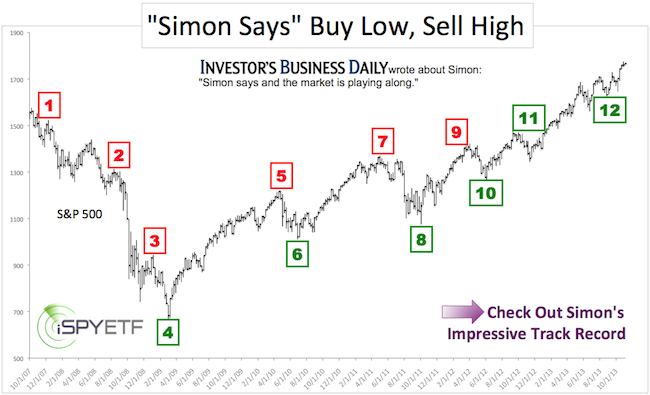On Monday MACD triggered a sell signal for the S&P 500. There are a number of reasons why this sell signal should be watched very carefully:
1) It occurred after the S&P 500 (SNP: ^GSPC) pushed into triple resistance.

The April 2 Profit Radar Report highlighted this resistance cluster as follows:
“Trend line resistance going back to October 2011 is at 1,900. Minor trend line resistance is at 1,898. The centerline of a short-term trend channel is at 1,898."
2) The S&P 500 reversed at 1,897.28 and painted a bearish red reversal bar.
3) The S&P 500 found support at the 50-day SMA and a trend channel going all the way back to the 2009 bear market low.
4) Perhaps most importantly, seasonality is turning quite bearish in April.
A bounce is likely since the S&P 500 (NYSEArca: SPY) found support exactly where it should have. However, when this bounce is finished, seasonality and the MACD sell signal may take over and push stocks lower.
Why is seasonality such a big deal?
A chart says more than a thousand words, and this chart shows that (based on history) investors do not want to own stocks after April in a midterm election year.
The chart and further explanation is available here:
Historic S&P 500 Seasonality is about to Turn Ugly
Simon Maierhofer is the publisher of the Profit Radar Report. The Profit Radar Report presents complex market analysis (S&P 500, Dow Jones, gold, silver, euro and bonds) in an easy format. Technical analysis, sentiment indicators, seasonal patterns and common sense are all wrapped up into two or more easy-to-read weekly updates. All Profit Radar Report recommendations resulted in a 59.51% net gain in 2013.
Follow Simon on Twitter @ iSPYETF or sign up for the FREE iSPYETF Newsletter to get actionable ETF trade ideas delivered for free.

|